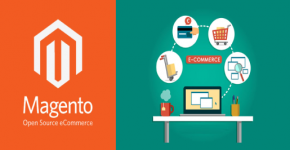Mastering the Art of Cloud-Based Application Development: A Practical Guide
The rapid growth in migrating mobile apps to the cloud is noteworthy. Cloud-based software proves advantageous for businesses, resulting in reduced costs related to equipment and enhanced performance. Additionally, business systems exhibit excellent scalability in cloud environments, providing companies with increased opportunities for expansion.
We have curated this guide to facilitate your comprehension of what a cloud-based app entails and how to harness its advantages in developing cloud applications.
What Is Cloud Application Development?
A cloud-based application is one in which most data processing occurs on a remote server, with some or all of the user interface occurring on a web or mobile browser. These apps have multiple benefits, chief among them being that they can be accessed from anywhere, whether on your desk at home, on the go, or connected to the internet via a cellular network.
Because of this accessibility, cloud-based applications are perfect for tasks that don’t require instant feedback. This is why many businesses use them for online sales and registration forms—users can fill them out later on their own time and continue browsing the site without logging in. Additionally, because cloud-based apps rely on an API rather than direct interaction with a user’s device, they can be used for anything from managing inventory to issuing payments. As long as an internet connection is available, a cloud-based app can be used practically anywhere.
Cloud-based apps also have some unique features that set them apart from their web-based counterparts. When a user interacts with a web-based app, their device usually becomes part of the process; for example, when they fill out a form or click a link. In contrast, when a user interacts with a cloud-based app, the information is sent to the server and then displayed on their device. This means you can create more complex and interactive applications than web-based ones and develop them faster since there is no need to build an entire user interface from scratch. Additionally, because cloud software is accessible worldwide, businesses can use it anywhere in any country or region.
Common types of cloud-based apps
To deepen our understanding of cloud applications, we’ll look at the main types categorized by service models: SaaS, PaaS, and IaaS.
Software as a Service (SaaS): Involves the creation of cloud-based applications accessible via mobile and web browsers, eliminating the need for installation. SaaS serves a variety of purposes, such as email tools, automation, document management, collaboration, and CRM systems.
Platform as a Service (PaaS): Offers a component rental model for application development, relying on a cloud provider for tools and infrastructure. PaaS platforms simplify development by providing software and hardware resources.
Infrastructure as a Service (IaaS): A service provider manages an enterprise’s infrastructure, including servers, networking, and storage. IaaS providers offer fault tolerance, security tools, and load-balancing services.
These models are integral to developing popular cloud applications like Slack, PayPal, Zoom, and Vimeo.
Cloud Apps Development: Steps to Follow
Cloud application development involves several sequential steps to ensure a smooth and efficient process. Let’s take a look at the basic steps that need to be taken while developing cloud applications:
Define goals and requirements
Before you begin development, clearly articulate the goals and define specific requirements. Meet with your team to get their input and set clear objectives. This will allow you to succeed and get the development done faster.
Choose a cloud service model
Depending on your business needs and application specifics, decide on PaaS, IaaS, or SaaS. The choice of model is one of the fundamental steps determining the further process.
Choose a cloud platform
Choose a reliable provider (e.g., AWS, Azure, Google Cloud), considering scalability and cost. Explore all available options to determine the best one, or ask an experienced software vendor with cloud development experience for advice.
Develop an architecture
Create a robust, scalable architecture with storage and microservices in mind. Given the available resources and objectives, the exemplary architecture will ensure the application runs efficiently.
Develop the application
This stage includes writing the code and implementing all the planned features. Developers follow best practices and use modern technologies to achieve the best result.
Implement security measures
Integrate security protocols for data protection and compliance. Some of the advanced security measures include Role-Based Access Control (RBAC), activity tracking, in-transit and at-rest data encryption, and others.
Testing
To eliminate bugs in the application process, the QA testing team conducts a series of tests, including full validation of all functionality, analysis of application speed, and stress testing if necessary.
Deployment
This stage includes deploying the application on the selected platform, configuring its parameters, and ensuring smooth operation.
Monitoring and management
Implement performance tracking tools and set up alerts. Continuous monitoring will allow you to detect potential problems quickly, avoiding significant crashes.
Scale as needed
Utilize scaling features to meet growing user needs. Collaborate with the software provider to make necessary changes and ensure application flexibility.
Backup and disaster recovery
Implement robust backup and recovery strategies. This will allow you to protect your data from accidental loss or deletion.
Continuous improvement
Collect user feedback, analyze performance, and implement updates as needed to ensure superior user satisfaction.
Compliance
Ensure your application complies with industry laws, regulations, and standards. For example, HIPAA, GDPR, PIPEDA, or HL7 for healthcare, etc.
User training and support
Provide resources for training and create support systems. This can include text-based guides, video tutorials, online technical support, etc.
Why Invest in Application Development for Cloud Computing
Investing in cloud-based application development brings exceptional advantages tailored to your business needs:
Scalability and flexibility. Quickly adapt to changes in demand, ensuring your application grows with your business without significant infrastructure changes.
Cost efficiency. The pay-as-you-go model reduces upfront costs, making it a cost-effective choice, particularly beneficial for startups and businesses with budget constraints.
Accessibility and collaboration. Cloud applications provide universal access, allowing users to collaborate from anywhere with an internet connection, promoting effective teamwork.
Rapid development. Utilize cloud platforms with advanced tools for faster development, ensuring your application reaches the market swiftly and adapting to market dynamics.
Global reach. Reach a global audience effortlessly, facilitating international business expansion and establishing a strong presence in diverse markets.
Integration capabilities. Seamlessly integrate with other cloud services, APIs, and systems, enhancing overall functionality and compatibility with various tools.
Investing in cloud app development addresses technical needs and strategically enhances business agility, cost-effectiveness, and overall competitiveness in the digital landscape.
How Much Does it Cost to Create a Cloud-Based Application: Average Prices
In terms of expenditure, developing a custom cloud application typically ranges from $20,000 to $100,000 or more, influenced by complexity, features, and scalability requirements. A detailed breakdown includes the following:
1. Software as a Service: $50,000 to $300,000 – Varies widely.
2. Infrastructure as a Service: Starts at $500 annually – Charges based on resource consumption.
3. Platform as a Service: Starts at $600 yearly – Priced on a resource-centric model.
4. Function as a Service: Varies among providers – Expenses contingent on executions and resource usage.
5. Database as a Service: Varies with tier options – Pricing fluctuates based on database type and use.
6. Container as a Service: Costs depend on usage and storage factors.
7. Storage as a Service: Varies based on usage – Providers and storage types determine pricing.
Actual costs diverge based on unique usage patterns, geographic location, and selected features. Therefore, for precise details, consulting the pricing documentation of your chosen cloud provider is imperative.
What are Cloud-Based Applications’ Tech Challenges to Pay Attention to?
Delving into cloud-based application development encompasses various challenges requiring careful consideration and strategic solutions. Here’s a comprehensive list:
Data Security:
- Ensuring robust protection for sensitive data during storage, transmission, and processing.
Scalability Management:
- Addressing the dynamic needs for scalable resources to handle varying workloads effectively.
Integration Complexity:
- Managing the intricacies associated with integrating cloud applications with existing legacy systems.
- Effectively handling API management for seamless integration with third-party services.
Performance Optimization:
- Addressing latency challenges to guarantee optimal performance for end-users.
- Minimizing network bottlenecks to optimize data transfer.
Reliability and Uptime:
- Implementing redundancy and failover tools to ensure high availability.
- Continuous monitoring of application performance and infrastructure.
Cost Management:
- Efficiently utilizing cloud resources to minimize costs.
- Strategic planning and effective budget management to avoid unexpected expenses.
Data Privacy:
- Managing data residency and compliance with regional data protection laws.
- Establishing clear privacy policies and mechanisms for user consent.
Vendor Lock-In Considerations:
- Selecting technologies and cloud providers that promote interoperability.
- Developing exit strategies to mitigate potential disruptions during provider changes.
Continuous Deployment and DevOps Practices:
- Implementing automation for continuous integration and deployment to facilitate faster release cycles.
- Encouraging cooperation between development and operations teams (DevOps).
User Experience Enhancement:
- Implementing effective load balancing to ensure a seamless user experience.
- Providing responsive design across various devices and platforms.
Legal and Contractual Navigation:
- Understanding Service Level Agreements (SLAs) with cloud service providers.
- Ensuring compliance with legal obligations and contracts.
Successfully navigating this expansive list of challenges requires a holistic and collaborative strategy. This approach should encompass continuous monitoring, automation, and a steadfast commitment to industry best practices in cloud application development.
Conclusion
In summary, the escalating shift of mobile apps to the cloud highlights its benefits for businesses, including cost reduction and improved performance. This comprehensive guide covers various aspects of cloud application development, from defining objectives to exploring common types like SaaS, PaaS, and IaaS. The steps in cloud app development, statistics affirming its growth, and the benefits of cloud-based solutions are detailed. The guide concludes with insights into development costs and key technological challenges, emphasizing the need for a holistic approach and adherence to industry best practices.





